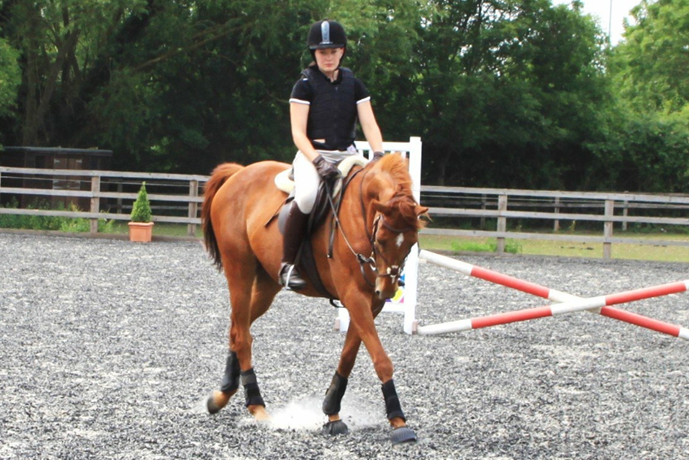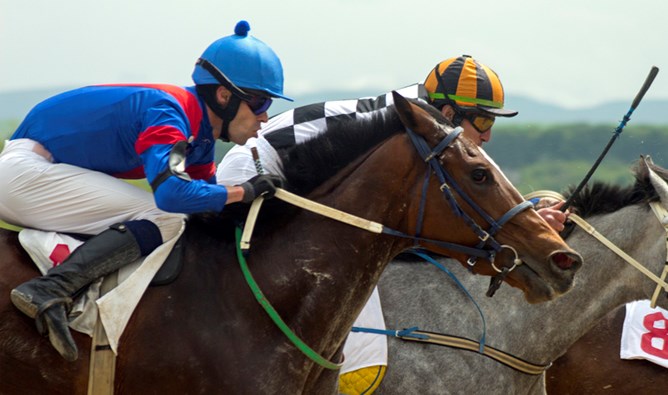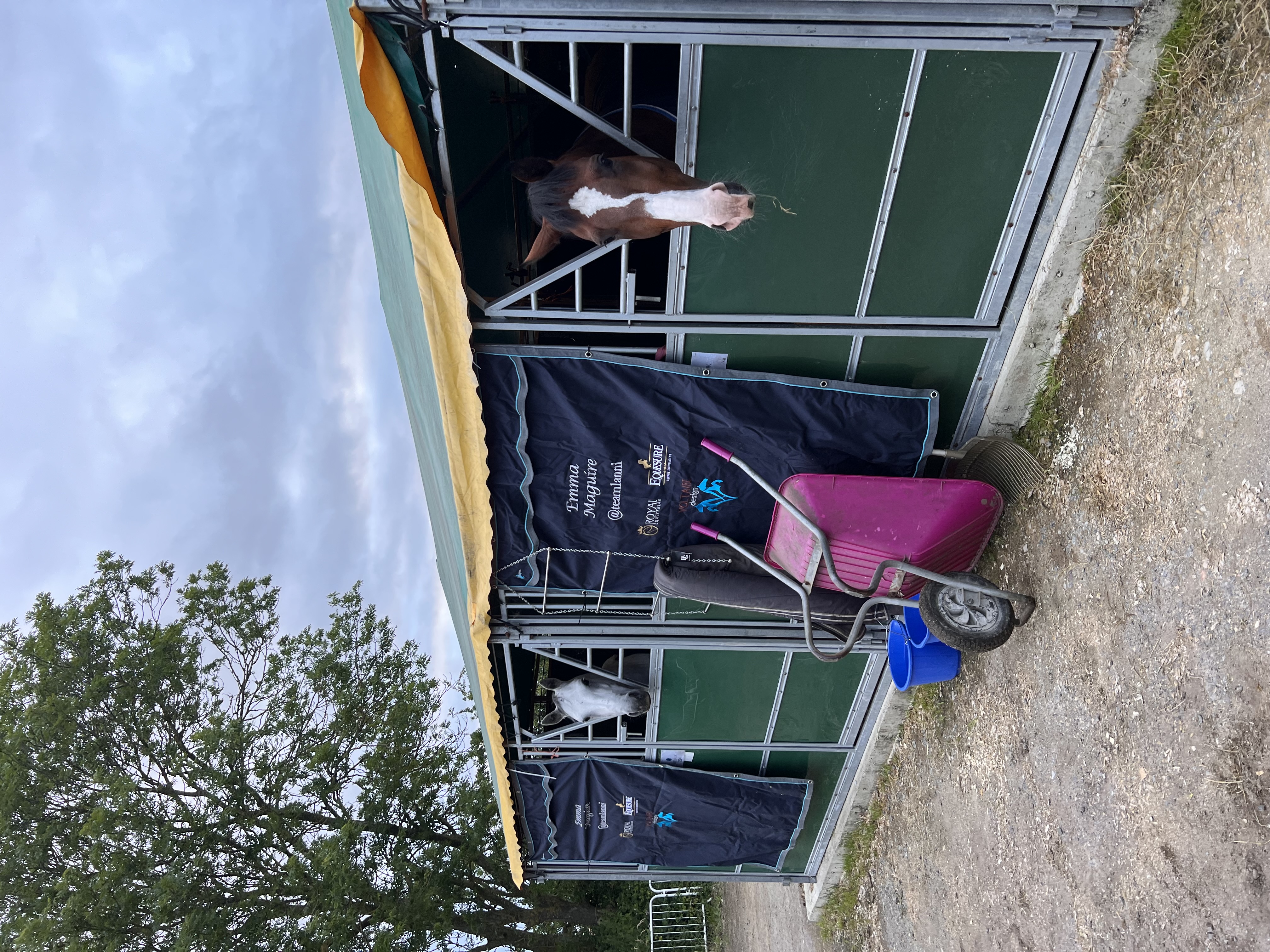Horse racing is one of the UK’s favourite sports. According to Equine World UK, its history spans as far back as the 12th century, when knights from England brought Arab horses home when they returned from the Crusades.
The Arab horses were bred with our nation’s horses to produce Thoroughbreds, the breed used in racing today.
It was actually under Queen Anne’s reign (between 1702 and 1714) that horse racing as we know it began. Each race would involve numerous horses (they had previously raced only head-to-head), and would be watched by spectators who were able to bet for which animal they thought would pass the finish line first.
Several famous racecourses in England were founded during this time, including Ascot which opened in 1711.
With such a long and intriguing history, it is little wonder that so many equine enthusiasts are keen to be part of horse racing. While spectating is a thrill in itself, many owners want a bigger stake in the industry by participating in the events.

Learning the lingo
As with many other sports, horse racing can seem like it comes with its own dictionary. Whether you are simply spectating or participating in the race in some way, mastering the terminology will make it the best possible experience.
Racehorses need special protection due to the higher risks they face during competition. Equesure boasts a team of equine insurance specialists who have more than 60 years of combined industry knowledge.
It is our job to arrange horse insurance on your behalf, finding you a policy that suits both your horse and your budget. Benefits can include things like:
- Vet’s fees cover for life saving surgery
- Personal dental cover available on some policies
- Tack and saddlery cover available
- EU cover/usage available upon referral
- Personal accident cover up to £20,000
- Public liability up to £2 million
- Legal protection up to £10,000 available
Common horse racing terms
Below is a list of common horse racing terms and their meanings – master them and you’ll seem like a seasoned pro at your next horse event.
Abandoned
A race that’s called off or racecourse that’s been closed, typically due to bad weather.
All-weather
Races that take place on an artificial racing surface, hence why they are all-weather. Britain has five all-weather tracks, explains Great British Racing, which are: Chelmsford, Lingfield, Southwell, Kempton and Wolverhampton. Fibresand, Tapeta and Polytrack are the three types of artificial surface used for such events.
Amateur
A jockey who isn’t classed as professional and doesn’t collect a fee for taking part in a racing event. Their racecard will contain a prefix such as Captain, Miss, Mrs or Mr, for instance.
Apprentice
A trainee jockey for flat races who has links with the stable of a licensed trainer. Weight limits apply to apprentices when they take part in races against professional jockeys. They are able to compete for the Apprentice title, awarded to the person with the most wins under their belt come the end of the season.
Backside
The common term used to describe the stable area.
Blinkers
These are the accessories used to minimise a horse’s field of vision. They are meant to prevent the animal from swerving into other horses or objects located on its right or left side. Also known as ‘blinds’.
Blanket finish
When a horse race is so close at the end that you could (in theory) position a single blanket across the two horses. In the event of a blanket finish, the race judge will typically use a photo to decide which horse came first.
Boxed in
When a horse is unable to get a clear run because other horses are too close to them during a race.
Broke down
A horse that becomes injured during a race. Remember that you need horse insurance that covers your equine for racing before entering them into any type of event of competition.
Bumper
Flat races which take place under jump rules. Prospective, young jumps horses take part before they move to fences or hurdles. This is officially known as the National Hunt flat race.
Chute
When an extension is made on a racecourse in order to enable a straight run at the start of the race – the chute is typically added to the top of the home straight.
Colours
The jackets (or ‘silks’) jockeys wear in order to identify the horse. A horse participates in a race in its owner’s colours which are displayed on racecards and registered with Weatherbys.

Conditions race
An event that permits horses to have extra weight due to things such as age, sex or whether they have won a race previously.
Connections
The people associated with a certain horse, including the trainer and owner.
Dead heat
Two horses that finish a race at exactly the same time.
Declared
A notification from a trainer to the racing body that they intend to run a horse in a certain race – this usually happens at the 48-hour or 24-hour stage before the event.
Draw
The position a horse starts at on the flat in the stalls. Weatherbys draws the stall number for each horse at random. The only exception is in a number of top races where the connections of every horse, having been selected randomly, get to pick their stall. The phrase “well drawn” is used to describe a horse which ends up in a favourable stall.
Drifter
When odds for a certain horse get bigger just before a race is about to begin because of a lack of market support. The horse in questions may be described as being “on the drift”.
Enquiry
When stewards review a race to assess a potential infraction of the rules. A course announcement will be made if it is thought that the enquiry will impact the race result.
Evens
When a bet will result in equal winnings – so, a £20 stake at evens will win you £20, meaning a total return of £40.
Flat racing
As the name suggests, these are races carried out on flat surfaces. The turf season is the main part of the flat racing season, which takes place from late March to early November. The introduction of all-weather courses have meant that flat racing can take place all year round.
Form
The race record of a horse. This will be marked by figures (as well as letters) by its name on the racecard (1 equals first, 2 equals second, etc.). The numbers are read from right to left, so a horse’s most recent run has the associated figure right next to its name.
Front-runner
When a horse’s running style is to try to lead or get near to leading at the beginning of a race and remain there for as long as possible.
Furlong
Equivalent to one eighth of a mile or 220 yards. Racecourses contain numbered posts which denote the furlongs back from the winning post.
Gallops
The ground where trainers exercise the horses. The majority of trainers have their own, private gallops, though there are some major training centres in Britain including Lambourn (mainly jump), Newmarket and Malton (mainly flat).
Going
Used to describe the surface of the racecourse, which can range from heavy to firm.
Going down
When horses are being taken to the start.
Guineas (race)
The abbreviation for the 1,000 Guineas or the 2,000 Guineas – both classic and famous horse races. If a horse is deemed capable of entering either of these races then they may be referred to as a ‘Guineashorse’.
Group 1 / Grade 1
The highest race category of all flat and jump races. Britain’s classic flats, like the Gold Cup at Royal Ascot, are Group 1, while key championship jump races like the Cheltenham Gold Cup are classed Grade 1.
Handicap
A race where every individual horse is permitted a different weight to carry, in line with official handicap ratings set out by the BHA Handicappers. In theory, this should ensure that every horse is able to run on a fair and equal standing – the ‘perfect’ handicap would see a scenario where all horses crossed the finish line in a dead-heat.
Handicap rating/mark
Once a horse has run a few times, the BHA will give it an official handicap rating, which will then be used to decide its weight if it runs in a handicap. A horse that performs well will see its handicap go up, and it will go down if it performs badly. The official person who allocates handicap ratings is known as the handicapper.
In-running/in-running betting
Events that happen during the course of a race. It’s possible to bet on the race outcome during the actual race (rather than before), which is known as in-running betting.
Jocked off
When a jockey is replaced by another rider on a horse he typically rides, or for a certain event he’s booked to take part in.
Jackpot
A style of tote betting when the person betting must correctly pick the winning horse of every listed race in order to win.
Left-handed track
A course that sees horses running anti-clockwise.
Length
The unit used to measure the distances between horses at the end of the race. Also the measurement of a horse from its head to its tail.
Levy
A surcharge bookmakers pay, in line with their gross profits, which is put towards things like racecourse improvements and prize money.
Maiden
A horse that hasn’t yet won a race.
Minimum trip
The shortest distance a race can be – this is two miles over jumps or five furlongs on the flat.
Non-runner
A horse that has been withdrawn from a race it was originally going to run in.
Over the top
When a horse is thought to be past its prime because of too much training and/or racing and needs to rest.
Off the pace
When a horse is a significant distance behind the horses at/near the front during a race.
Parade
Prior to a race, horses usually line up in numerical order (i.e order of their racecard) and are taken to the front of grandstands for spectators to see them.
Photo finish
When the end of a race is so close, the judge examines a photo taken by a camera positioned on the finishing line to determine the actual winner.
Racecard
The day’s racing programme, which displays the runners, riders and times of each race taking place.
Rating
A measurement of a horse’s ability, starting from zero and going up to three figures. The best rated jumpers are usually in the 180s, while the best flat racers are in the 130s.
Stalls handler
The person who loads each horse into their designated stall.
Stayer/staying on
A stayer is a horse skilled in racing long distances on flat surfaces. If a horse has a strong finish in a race, this usually means they have good stamina and will be described as “staying on”.
Turned out
Many courses present a ‘best turned out’ award for the horse that officials believe is best presented while in the paddock. This phrase can also describe a horse taking a break from training/racing and is out in the fields.
Turn of foot
This is a horse’s ability to accelerate in the latter part of a race. A horse that has a good turn of foot means it has a decent speed at finish.
Unfancied
A horse that’s not expected to win a race.
Valet
The person who prepares the jockey equipment.
Weighing in/out
Jockeys have to stand on official scales with their racing kit and saddle before and after each race. This allows officials to determine whether they are carrying the right weight allotted to the horse they are riding.
Horse insurance from Equesure
At Equesure, we understand the sheer passion horse owners have for their animals. While it is no doubt a huge responsibility, it is also incredibly rewarding and arguably one of life’s greatest pleasures.
Our job is to help you protect your investment by arranging horse insurance to match your unique requirements.
We can provide you with a competition horse policy that covers horses or ponies competing at affiliated or unaffiliated events. Cover is based on the activity itself, as certain events are classed higher risk than others.
When you get a quote from Equesure, it’s important to give details of the level of activity you are participating in. That way, we can be sure that we match you with the right policy for you and your horse’s needs.
So, whether you are keen to get involved in horse racing or other equine events, or simply want to make sure your animal is protected, get a quote from Equesure today.
Policy benefits and features offered may very between insurance schemes or cover selected and are subject to underwriting criteria. Information contained within this article is accurate at the time of publishing but may be subject to change.





